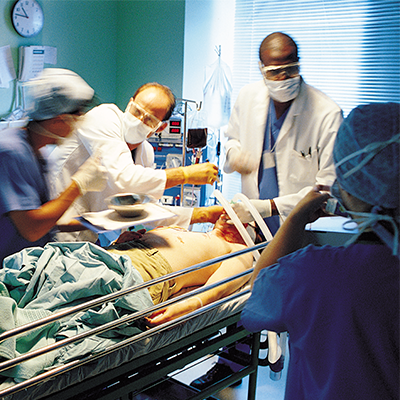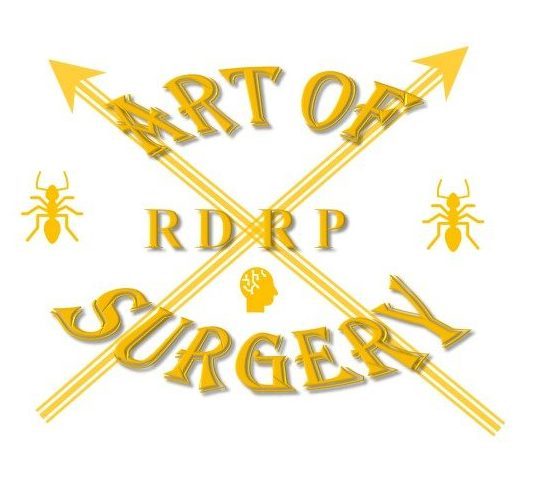Trauma
Ready..Set...ABC.

ABCDE
First steps
Attach pulse, ECG and BP monitor, insert iv line
“How are you?” – If answers in full sentences, airway, breathing and brain ok; if short sentences, likely to have breathing difficulty
Airway
– Give 15L/min
– Remove VISIBLE objects obstructing airways
– Insert oropharyngeal (guedel) or nasopharyngeal airway if reduced GCS
Breathing
– Look, listen and feel
– any obvious chest deformity
– SpO2 at the inspired O2 amount
– Listen to breath sounds – rattling, stridor, wheeze
– Percuss chest – hyper-resonance or dullness
– Auscultate
– Check position of trachea
– Feel chest wall for surgical emphysema or crepitus
Circulation
– Look at colour of hands- blue, pink, mottled
– Assess limb temperature
– CRT
– Pulse
– Palpate peripheral and central pulses: rate, quality and regularity
– BP
– Auscultate heart – murmur, pericardial rub, difficult to hear
– Urine output if there’s a catheter
– Look for signs of haemorrhage (thoracic, intra-peritoneal, retroperitoneal, gut)
– Give 500ml of warm saline/Hartmann’s over less than 15 mins if hypotensive, 250ml if known heart failure
– Reassess every 5 minutes until normal BP reached
Disability
– Review and treat ABCs
– Check patient’s drug chart
– Examine pupils (size, equality, reaction to light)
– AVPU
– Blood glucose: if unconscious and <4mmol/L, give 50ml of 10% glucose iv; further doses every minute until fully conscious (upto 250ml in total)
– Nurse in lateral position if unconscious and airway not protected
Advanced Life Support (Adult)
Unresponsive and Not Breathing?
Call resus team
Start CPR 30:2
Attach defibirllator/monitor
Assess Rhythm
Shockable – 1 shock and resume CPR for 2 minutes…then assess rhythm
Non-shockable (PEA/asystole): resume CPR for 2 mintues then assess rhythm
ROSC – Move to ABCDE, treat precipitating cause
During CPR...
Give Oxygen
Give iv adrenaline every 3-5 minutes
Give iv amiodarone after 3 shocks
Indications
Penetrating chest/epigastric trauma with cardiac arrest (any rhythm)
Contraindications: blunt injury, more than 10mins of loss of cardiac output, any cardiac output
Equipment
Large scalpel, large scissors, blunt forceps, gigli saw
Procedure summary
Bilateral thoracostomies in 5th intercostal space, mid-axillary line
Extend to sternum with scissors
Cut through sternum to join both incisions.
Lift up as clamshell and open pericardium to find injury to heart
